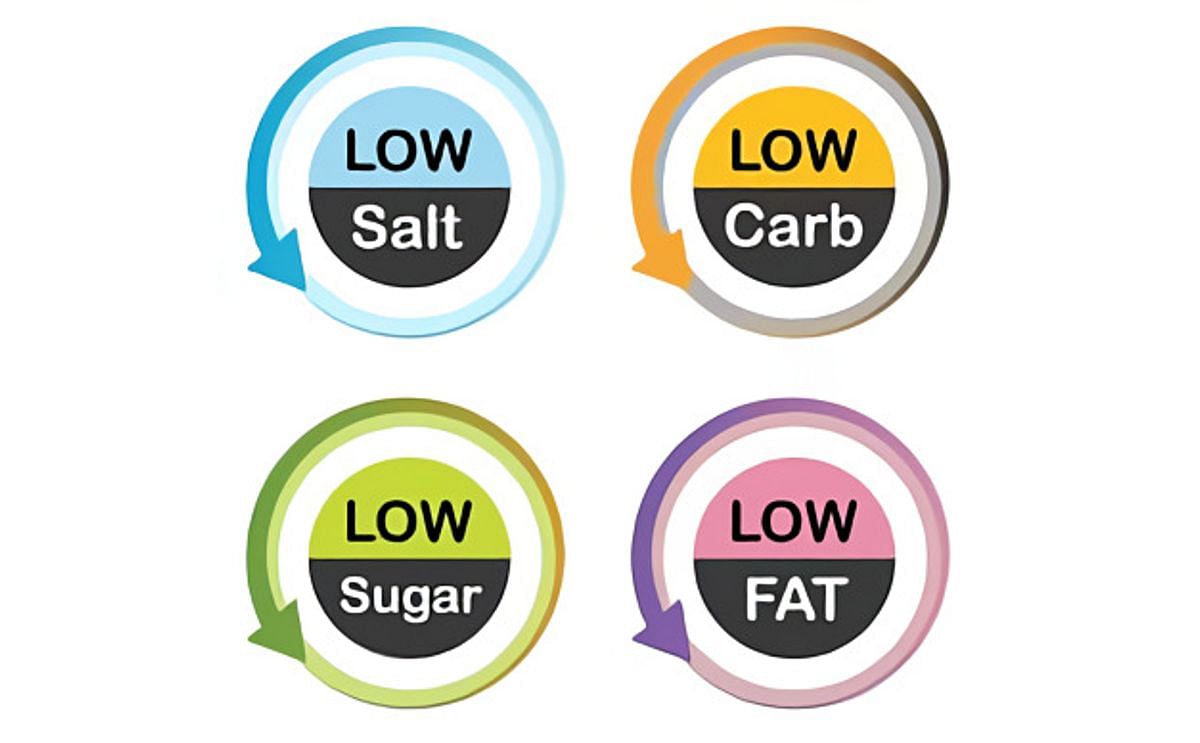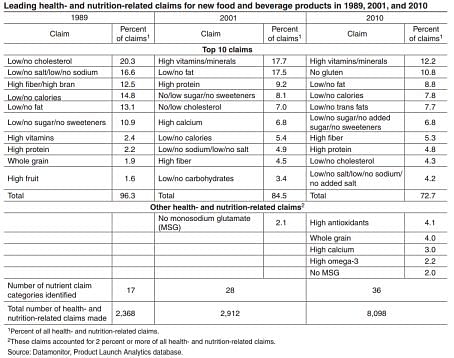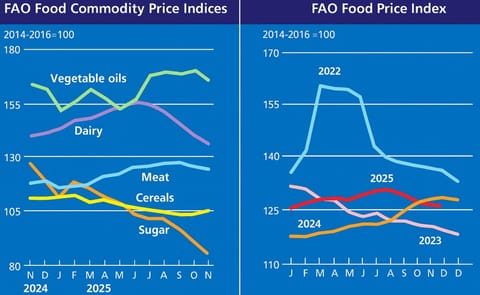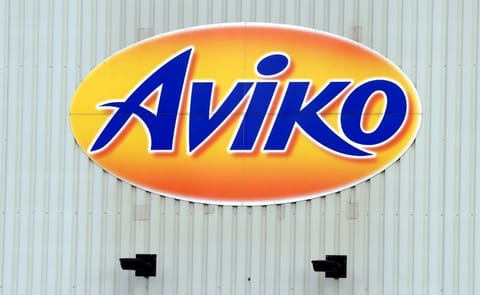Health and Nutrition related Claims
Health and Nutrition claims on new food products increasing

A U.S. Dept. of Agriculture’s Economic Research Service (USDA ERS) study shows that 43% of new food products in 2010 carried at least one health- and nutrition-related claim, compared to 25% of new products in 2001.
Using data from the Datamonitor Group’s Product Launch Analytics database, the researchers were able to track new products carrying health- and nutrition-related claims from 1989 to 2010.
The researchers then used Mintel’s Global New Product Database to compare the nutritional profile of new products with health- and nutrition-related claims to all new products over 2009 to 2010.
The researchers found that new food products introduced with health- and nutrition-related claims accounted for 43.1% of all new U.S. food product introductions in 2010, up from 25.2% in 2001 and 34.6% in 1989. The reduction in health- and nutrition-related claims from 1989 to 2001 followed enactment of the Nutrition Labeling and Education Act of 1990 (NLEA), which required most food products to carry the Nutrition Facts label and established labeling rules for the use of voluntary nutrient content and health claims.
Overall growth in health- and nutrition-related claims after 2001 reflect increases in low/no calorie, whole grain, high fiber, and low/no sugar claims. Health- and nutrition-related claims per product continued to increase, from 2.2 in 2001 to 2.6 in 2010, which suggests that competition between companies continued to result in a more complete representation of the health and nutritional attributes of their products.
A proliferation of new products with claims appealing to weight-conscious consumers over 2001 to 2010 reflects growing awareness of obesity-related problems and educational campaigns targeting obesity. Claims related to gluten, antioxidants, and omega-3 ranked among the leading health- and nutrition-related claims by 2010.

Leading health- and nutrition-related claims for new food and beverage products in 1989, 2001 and 2010
The growth in “no trans fats” claims came as companies responded to new food labeling regulations that required disclosure of the trans fats content, and public communications that gave prominence to limiting trans fatty acids. For new food products introduced in 2009 and 2010, sales and nutritional quality of those products carrying health- and nutrition-related claims exceeded that of all new food products.
Read the full report: "Introduction of New Food Products With Voluntary Health- and Nutrition-Related Claims, 1989-2010"










